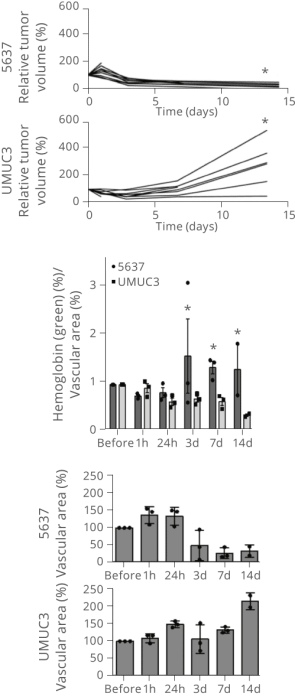Poor spatial resolution of current imaging modalities often limits monitoring of both angiogenesis and outcome of vascular-targeted therapies. So far, a detailed evaluation has only been possible using invasive approaches. Non-invasive, high-resolution images acquired by RSOM (raster-scanning optoacoustic mesoscopy) facilitate detailed insights into dynamic responses to novel tumor therapies in a longitudinal manner. Beyond understanding the mechanisms after therapy, RSOM can be applied to predict treatment response of different bladder tumor models much earlier than other modalities. Clear differences emerge in vascular normalization after therapy, vessel occlusion, and neoangiogenesis in responders versus non-responders, allowing for a quick adjustment of treatment parameters.


Quantification of RSOM signals following therapy in bladder tumor mouse models.
While responsive tumors show a complete vascular breakdown after VTP, resistant tumors only partially collapse before recruiting new vessels from the tumor periphery.
Napp et al. Int J Cancer. 2018